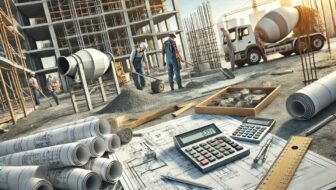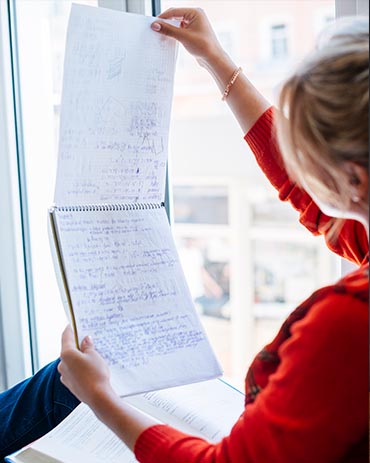Mastering Building Quantity Estimation: A Step-by-Step Guide

Accurate building quantity estimation is crucial in any construction project, helping to ensure smooth workflows, cost control, and timely project completion. Whether you’re a contractor, architect, or homeowner, mastering the art of estimation can prevent unforeseen budget overruns and delays. This step-by-step guide will break down the fundamentals of building quantity estimation and provide tips for getting it right every time.
What is Building Quantity Estimation?
Building quantity estimation involves calculating the quantities of materials required for a construction project. From concrete to bricks, each material needs precise calculations to avoid both shortages and wastage. Accurate estimation is not just about materials, though—it also encompasses labor costs and project timelines. It’s essential for contractors to stay within budget and avoid delays.
Why is Accurate Estimation Important?
Inaccurate estimations can derail entire projects. A lack of materials can lead to delays, while overestimating can result in excessive waste and unnecessary costs. Accurate building quantity estimation ensures that every resource is allocated effectively, making the process smoother for everyone involved.
Step-by-Step Guide to Mastering Building Quantity Estimation
1. Break Down the Project into Phases
Start by dividing the project into manageable phases. This simplifies the estimation process, allowing you to focus on each section in detail. Whether it’s foundation work or roofing, breaking the project into stages provides better clarity on material and labor needs.
2. Understand the Materials Needed
Knowing the materials you need for each phase of the project is essential. For example, foundation work might require concrete, steel rods, and waterproofing materials, while roofing may involve tiles or metal sheets. An in-depth understanding of your project will make the estimation process more accurate.
3. Calculate Material Quantities
Use architectural plans to measure the quantities required for each material. For example, if you’re calculating bricks, use the wall dimensions to estimate how many you’ll need. Tools like quantity sheets or estimation software can simplify this process. For help with this, consider checking out our professional services to streamline your estimation work.
4. Account for Labor Costs
Labor is often the most significant cost after materials. Estimate how many hours each phase will take and the number of workers you need. This gives you a more comprehensive view of the overall project cost.
5. Factor in Waste and Contingencies
Even with precise calculations, waste is inevitable. Always factor in a waste percentage, typically around 5-10%, depending on the material. Additionally, set aside a contingency fund to cover unexpected costs.
6. Use Software and Tools
Today’s estimation software can make this process easier and more accurate. Consider using tools that provide real-time pricing updates for materials and labor. We offer professional building quantity estimation services—check out our services for more information.
Common Mistakes to Avoid in Building Quantity Estimation
1. Ignoring Site Conditions
Site conditions can dramatically affect material requirements. For example, soft soil might require deeper foundations, while uneven terrain could mean more excavation work.
2. Misinterpreting Blueprints
A common error in estimation is the incorrect reading of blueprints. Ensure your understanding of the project plan is accurate before calculating material quantities.
3. Underestimating Labor Costs
Labor costs can vary significantly depending on location, skill level, and project complexity. It’s essential to factor in these variables to avoid costly surprises later.
Useful Tips for Accurate Building Quantity Estimation
- Consult Experienced Professionals
If you’re unsure, consult experts in the field. Experienced contractors or architects can provide insight and avoid costly mistakes.
- Keep Updated on Material Prices
Prices of construction materials fluctuate frequently. Regularly check market prices and update your estimations accordingly. For daily-use products at competitive prices, consider visiting **[this online shop](#)** for a wide range of options.
- Use Standardized Methods
Stick to recognized estimation methods like the Standard Method of Measurement (SMM). This helps to avoid errors and keeps estimations consistent across different projects.
Benefits of Accurate Building Quantity Estimation
1. Cost Efficiency
A well-prepared estimation saves costs by reducing waste and ensuring the right amount of materials are ordered.
2. Time Management
Accurate estimations help in scheduling work and ordering materials on time, leading to smoother project timelines.
3. Enhanced Project Planning
Proper estimation allows for better financial planning, reducing the likelihood of running over budget.
Conclusion
Mastering building quantity estimation is essential for anyone involved in construction, from contractors to architects. By breaking down the project, understanding material needs, and using professional tools, you can estimate your project costs accurately and avoid common pitfalls. Whether you’re managing a small home renovation or a large commercial project, accurate estimations can make or break your success.
For professional assistance with your estimation, don’t hesitate to reach out to us. If you’re also looking for daily-use products at competitive prices, explore this eCommerce store to meet your needs.
By following this guide, you will gain a deeper understanding of how to approach building quantity estimation effectively, ensuring that your project runs smoothly and remains within budget.
FAQs on Building Quantity Estimation
There are numerous software tools available, including PlanSwift and Bluebeam, which streamline material and labor calculations.
It’s recommended to add 5-10% as a contingency, depending on the complexity of the project.
You can do it yourself if you have experience, but for large or complex projects, hiring a professional estimator or using a service is advisable. You can contact us for expert assistance.
Estimations should be updated regularly, especially for long-term projects, to account for fluctuations in material prices and labor costs.

Top 10 Excel Templates for Civil Engineers: Streamline BOQs and Cost Estimation
Did you know that 63% of civil engineers waste over 5 hours weekly on repetitive tasks like manual BOQ preparation...
House Plan and BOQ Bundle: The Perfect Combo for Builders and Contractors
When it comes to residential construction projects, two critical elements ensure smooth execution and cost-effective results: a well-designed house plan...

